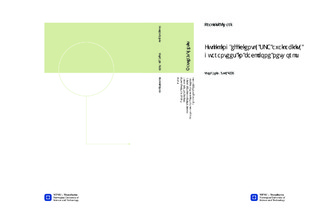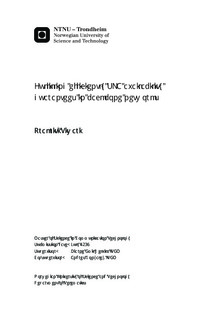| dc.description.abstract | The availability and reliability of backbone networks is important tosociety. However, physical, software and unintentional human errorfailures affect the links and nodes in a backbone network. To overcomesuch failures in the network, recovery mechanisms such as Protectionand Restoration are utilized. Additionally, a concept of Service LevelAgreement (SLA) is introduced between the provider and the user whichdefines and guarantees the network availability requirements and penaltyschemes. In this thesis, fulfilling the SLA availability guarantee efficientlyin a backbone network is investigated.This thesis focuses on the problem of handling end-to-end path failureson backbone networks. Some of the popular existing recovery mechanismsto handle such failures are Dedicated Backup Path Protection (DBPP) andPath Restoration (PR). A high percentage of network survivability canbe achieved by DBPP with a reserved backup path for each provisionedconnection. Unfortunately, it is very costly and resource demanding.Whereas, a PR based solution consumes only the needed resources but itis very slow to recover from failure which might effect the SLA availabilityguarantee. The work in this thesis aims at providing a hybrid networkrecovery model that combines the benefits of both DBPP and PR. Thehybrid model switches between DBPP and PR according to the SLAavailability requirement over a contract period and the current networkconnection state (i.e. the remaining time of the SLA and current sum ofdowntimes (accumulated downtime)).Moreover, an analysis in the failure logs of UNINETT s backbonenetwork is made to model the probability distribution of the accumulateddowntime that uses PR. A distribution fitting is made for modeling theconnection downtime data taken from UNINETT s backbone networkwhere Weibull distribution proved to be a good approximation. Additionally,a model for distribution of accumulated downtime that usesDBPP for both non-simultaneous and simultaneous failures of the workingpath and backup path is provided. An in-depth explanation of howthese distributions models can be used in the design of hybrid models ispresented.Two hybrid models were approached in this thesis. The first hybridapproach used the DBPP scheme at the beginning of the SLA durationand then it switches to PR when the calculated SLA risk assessmentshows that the probability of violating the SLA requirement is lower attime t. The second hybrid approach used the PR scheme at the beginningof the SLA duration and then it switches to DBPP when the accumulateddowntime at time t reach near to the threshold of the SLA risk targetsuch that the probability of violating the SLA requirement is higher.The transition line which decides the switching between PR and DBPPare computed for each hybrid approach using the results obtained fromthe accumulated downtime distribution model of PR and DBPP. Thetransition line defined in this thesis provides information about when theconnection should switch between Protection and Restoration mechanismby knowing the network connection state. The computed transition lineswith a 1 percent SLA risk target is verified via discrete event simulationin DEMOS. The SLA risk target is the probability of failing the SLA,however the provider can tune the risk target by using an advancednetwork recovery mechanism (e.g Protection) for more or less time. Thesimulation results showed that the proposed hybrid models work well,fulfilling the SLA availability guarantee efficiently with respect to theresource utilization. In addition, the results also revealed that usingthe PR scheme at the beginning of the SLA contract provides threetimes better resource utilization than using the DBPP scheme at thebeginning. Cost analysis for network providers are made with differentSLA risk targets in order to find the optimal SLA risk target for networkproviders. The results from analysis suggested that the total cost fornetwork providers decreases with the increase of SLA risk target untilthe total cost reaches its minimum, then it starts to increase again.The result of this thesis might contribute to future research on developinga hybrid model to reach particular performance objectives incommunication networks. | nb_NO |

